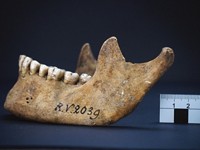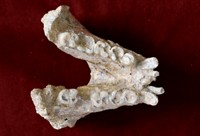Advertisement
Grab your lab coat. Let's get started
Welcome!
Welcome!
Create an account below to get 6 C&EN articles per month, receive newsletters and more - all free.
It seems this is your first time logging in online. Please enter the following information to continue.
As an ACS member you automatically get access to this site. All we need is few more details to create your reading experience.
Not you? Sign in with a different account.
Not you? Sign in with a different account.
ERROR 1
ERROR 1
ERROR 2
ERROR 2
ERROR 2
ERROR 2
ERROR 2
Password and Confirm password must match.
If you have an ACS member number, please enter it here so we can link this account to your membership. (optional)
ERROR 2
ACS values your privacy. By submitting your information, you are gaining access to C&EN and subscribing to our weekly newsletter. We use the information you provide to make your reading experience better, and we will never sell your data to third party members.
Biological Chemistry
Ancient Bacteria Keep on Repairing DNA
September 3, 2007
| A version of this story appeared in
Volume 85, Issue 36
Scientists have thought that ancient bacteria survive for millions of years by shutting down their metabolism. If the bacteria truly shut themselves down, however, their DNA would fall victim to decay. A research team led by Eske Willerslev of the University of Copenhagen, in Denmark, now shows instead that bacteria probably survive indefinitely by staying active enough to continuously repair damaged DNA (Proc. Natl. Acad. Sci. USA 2007, 104, 14401). The researchers extracted bacterial DNA from samples of ancient permafrost from Antarctica, Siberia, and Canada's Yukon Territory and amplified it using the polymerase chain reaction (PCR). To make sure they analyzed DNA from live cells only, the scientists targeted a 4,000-base-pair bacterial ribosomal DNA fragment because PCR products from dead organisms rarely are longer than 500 base pairs. They were able to amplify bacterial DNA—but no plant or animal DNA—from six samples that were up to 600,000 years old. The team couldn't amplify DNA from two older samples. As a test for active metabolism, the researchers measured CO2 production from respiration. The samples younger than 600,000 years produced CO2, but the older samples did not.





Join the conversation
Contact the reporter
Submit a Letter to the Editor for publication
Engage with us on Twitter